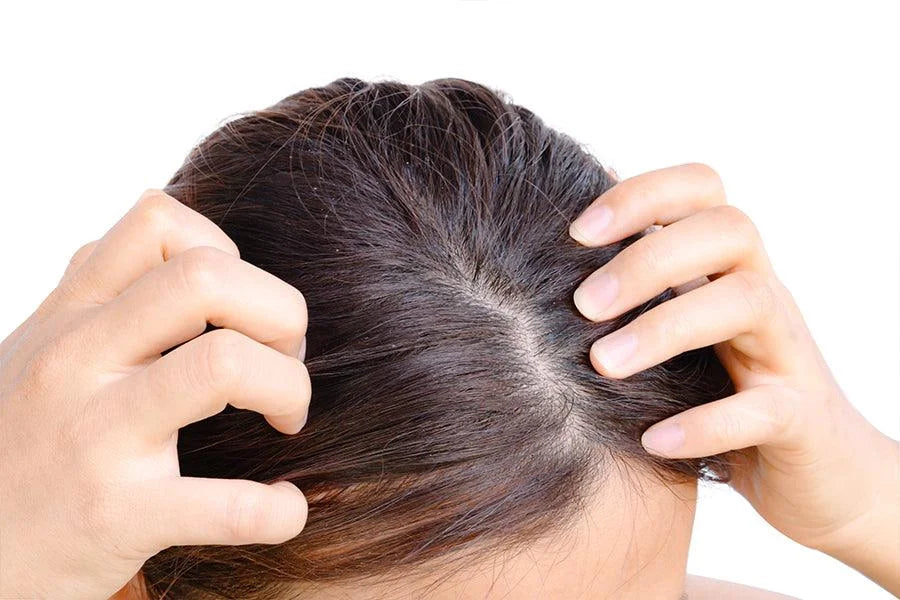Hair loss is a growing cause of concern for a majority of the population around us. It not only gives a major blow to our self-confidence but can also be a result of underlying systemic conditions. A major cause of hair loss or hair damage can be because of how you’ve been treating your scalp (read: not very nicely). You might be investing a fortune in your hair-care products but it can all go in the ditch if you are ignorant of the role your scalp and blood circulation plays in maintaining the healthy condition of your hair.
Is blood circulation related to hair health?
When your hair grows beyond the roots, it is essentially dead. This means that hair can only grow from the roots, not the shaft or its tips. So for obvious reasons, more nutrients and oxygen supply reaching the scalp implies that your hair has more potential to grow out healthier, denser, and longer. And the only means for nutrients, hormones, and oxygen to reach the scalp is via blood. Blood plays a major role in the hair cycle, particularly in the growth and maintenance of hair follicles in their healthiest state. Developing hair follicles, which lie in the upper subcutaneous tissue, are basically enveloped in mini blood vessels. With diminished (or absent) blood flow to the follicles via these blood vessels, follicles atrophy and eventually become dormant. However, with a rich blood supply, these follicles flourish with the nutrients, hormones, and oxygen that they receive, thus leading to healthy hair. Interestingly, the scalp is one of those organs that receive the most blood supply in the whole body.
Your hair grows is four stages: anagen, catagen, telogen, and exogen. Of these four stages, anagen is the one in which active hair growth takes place. Increased vascularity and blood flow in the scalp region maintains the hair follicles in the growth phase, i.e. anagen phase, which is the cornerstone of healthy hair. However, hair follicles can undergo miniaturization (a reduction in size and growth because of inadequate blood flow) because of a number of reasons (including ageing and diseases) and we tend to lose more hair and develop more bald patches. Signs of decreased scalp blood include:
- Dull, dry hair
- Diminished hair volume and hair thinning
- Excessive hair fall
- Reduced hair strand thickness and decreased density
- Diminished hair growth
How to improve blood circulation to your scalp?
If you’ve been noticing the above symptoms, it can be because of a decreased blood supply to your scalp. But you should not fret, as it can be pretty easy to improve the blood circulation and thus the condition of your scalp:
- Try the inversion method once every fortnight: Gently drop your torso so that your head is beneath the level of your heart (either while you stand or sit on a chair), and massage your hair for no longer than three minutes.
- Scalp massages go a long way: Scalp massages with a gentle circular motion and minimum pressure can stimulate blood flow. Additionally, you should also try using a small wooden brush to gently brush through your hair twice every day, i.e. once every morning and once before you go to sleep. This can aid in relaxation and stress relief along with improving blood circulation.
- Switch up your shampoos once in a while: Clarifying shampoos go a long way when it comes to the health of your scalp. They work by removing excessive build-up from your scalp and hair follicles, rendering your scalp clean and healthy.
- Add a light workout in the morning: Working out naturally increases the blood flow to all organs of the body. Additionally, exercising releases substances known as endorphins in the body, which increase your happiness.
- Eat mindfully: A diet that is rich in vitamin A, proteins, and Vitamin B is essential to maintain the health of your scalp and thus hair. You should remember to eat the rainbow, i.e colourful fruits and vegetables at least twice a day.


Share:
What Is Collagen and How Safe Are Collagen Supplements?
Amino Acid, The Building Block of Hair